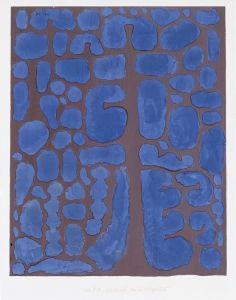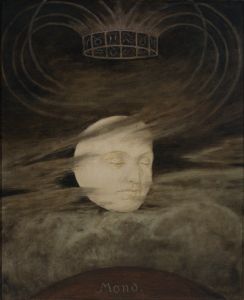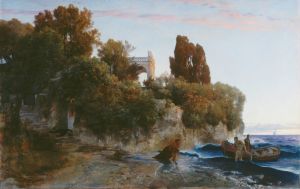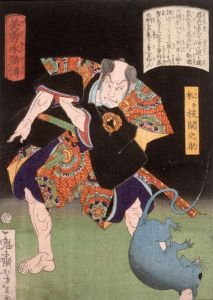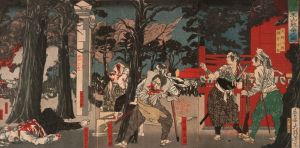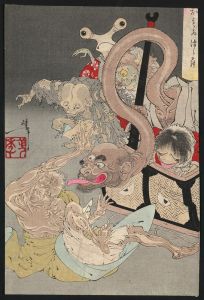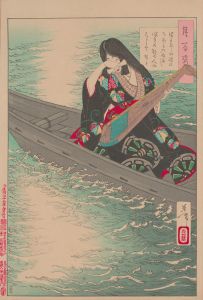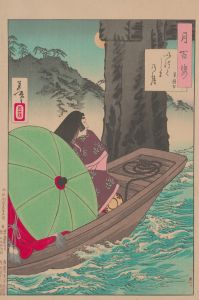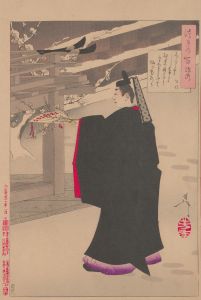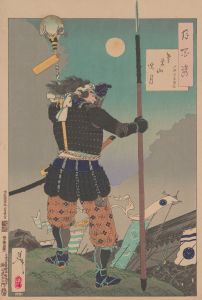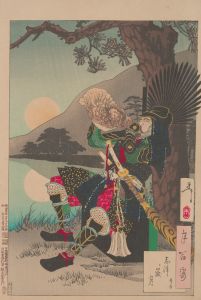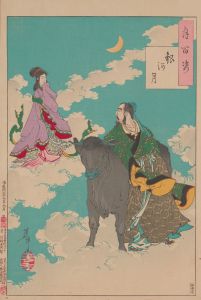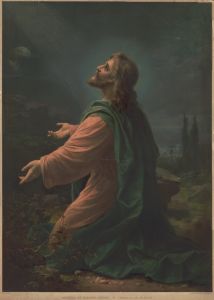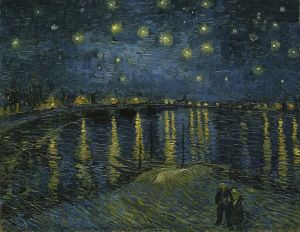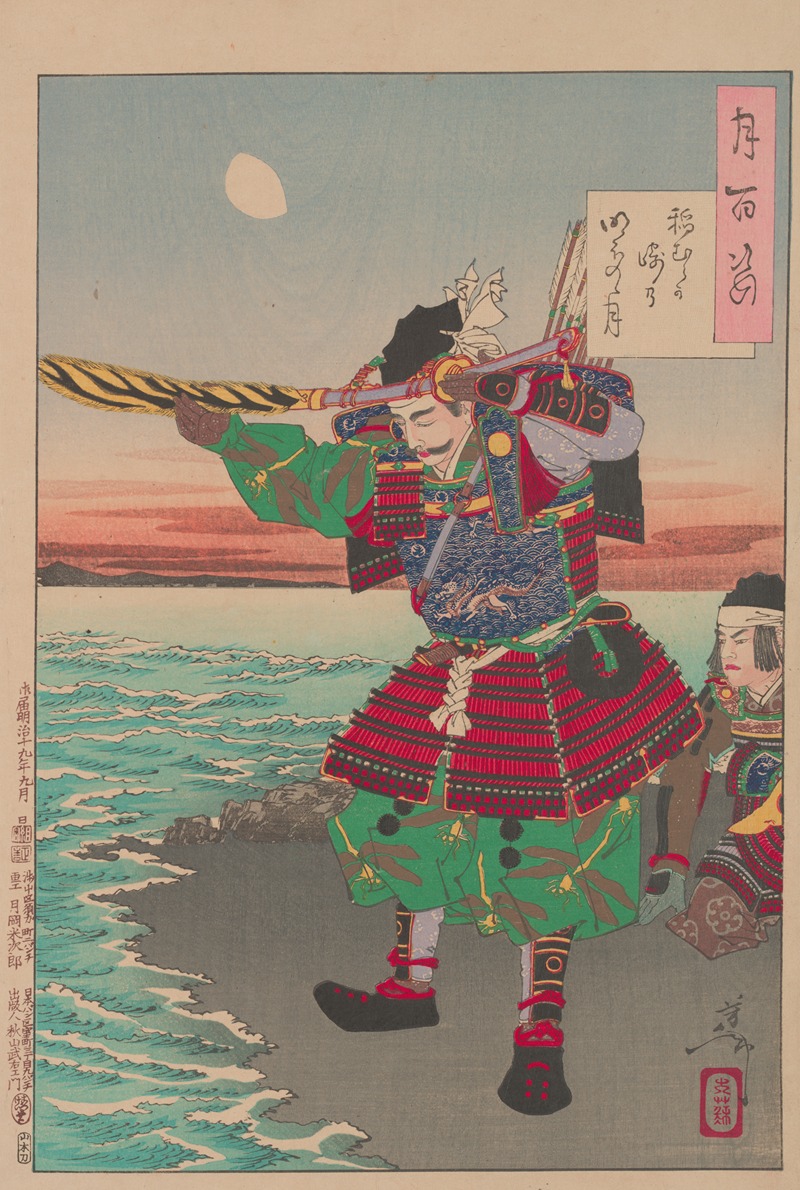
Inamura Promontory moon at daybreak
A hand-painted replica of Tsukioka Yoshitoshi’s masterpiece Inamura Promontory moon at daybreak, meticulously crafted by professional artists to capture the true essence of the original. Each piece is created with museum-quality canvas and rare mineral pigments, carefully painted by experienced artists with delicate brushstrokes and rich, layered colors to perfectly recreate the texture of the original artwork. Unlike machine-printed reproductions, this hand-painted version brings the painting to life, infused with the artist’s emotions and skill in every stroke. Whether for personal collection or home decoration, it instantly elevates the artistic atmosphere of any space.
Inamura Promontory Moon at Daybreak is a woodblock print created by the renowned Japanese artist Tsukioka Yoshitoshi (1839–1892). This artwork is part of Yoshitoshi's celebrated series titled One Hundred Aspects of the Moon (Tsuki hyakushi), which was published between 1885 and 1892. The series consists of 100 individual prints, each inspired by historical, literary, or folkloric themes, with the moon serving as a unifying motif.
The print depicts a serene and atmospheric scene at Inamura Promontory, a coastal location in Japan. The composition captures the moment of daybreak, with the moon still visible in the sky as the first light of dawn begins to emerge. Yoshitoshi’s use of color and line work in this piece exemplifies his mastery of the ukiyo-e tradition, blending naturalistic detail with a sense of poetic mood. The interplay of light and shadow, as well as the delicate gradation of colors, reflects the influence of Western artistic techniques, which were becoming increasingly prominent in Japan during the late 19th century.
Yoshitoshi’s One Hundred Aspects of the Moon series is widely regarded as one of his greatest achievements and a masterpiece of the late ukiyo-e period. The series explores themes of beauty, heroism, and the passage of time, often drawing from classical Japanese literature, noh theater, and historical events. Yoshitoshi’s work during this period is notable for its emotional depth and technical innovation, as well as its ability to capture the cultural and spiritual significance of the moon in Japanese tradition.
Specific details about the historical or literary inspiration for Inamura Promontory Moon at Daybreak are not readily available, but the print is consistent with the overarching themes of the series. The moon, a central element in the composition, serves as a symbol of transience and continuity, reflecting the broader philosophical and aesthetic concerns of Yoshitoshi’s work.
Yoshitoshi created this series during the final years of his life, a time when he was grappling with personal struggles and the rapid modernization of Japan. Despite these challenges, his prints from this period are celebrated for their technical brilliance and emotional resonance, marking a high point in the history of Japanese woodblock printing.
This print, like others in the series, was produced using traditional woodblock printing techniques, involving the collaboration of skilled carvers and printers who worked under Yoshitoshi’s direction. The One Hundred Aspects of the Moon series remains highly regarded by art historians and collectors, both for its artistic quality and its role in preserving the ukiyo-e tradition during a time of significant cultural change in Japan.





